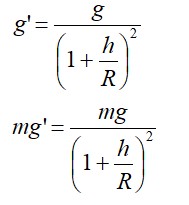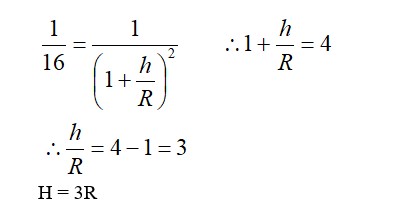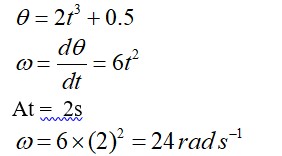8.23 A star 2.5 times the mass of the sun and collapsed to a size of 12 km rotates with a speed of 1.2 rev. per second. (Extremely compact stars of this kind are known as neutron stars. Certain stellar objects called pulsars belong to this category). Will an object placed on its equator remain stuck to its surface due to gravity? (mass of the sun = 2×1030 kg).
8.23 A star 2.5 times the mass of the sun and collapsed to a size of 12 km rotates with a speed of 1.2 rev. per second. (Extremely compact stars of this kind are known as neutron stars. Certain stellar objects called pulsars belong to this category). Will an object placed on its equator remain stuck to its surface due to gravity? (mass of the sun = 2×1030 kg).
-
1 Answer
-
Yes, a body gets stuck to the surface of a star if the inward gravitational force is greater than the outward centrifugal force caused by the rotation of the star.
Gravitational force, = , where M = mass of the star = 2.5 = 5 kg
M = mass of the body, R = radius of the star = 12km = 1.2
= 2.31
Centrifugal force = mr where angular speed = 2 and angular frequency = 1.2 rev/s
mR( = m (1.2 = 6.81
Since , the body will remain stuck to the surface of the star.
Similar Questions for you
->R3 = (R + x)2 (R – x)
->R3 = (R2– x2) (R + x)
->x2 + Rx – R2 = 0
Stress
R is not correct.
Taking an Exam? Selecting a College?
Get authentic answers from experts, students and alumni that you won't find anywhere else
Sign Up on ShikshaOn Shiksha, get access to
- 66k Colleges
- 1.2k Exams
- 680k Reviews
- 1800k Answers




